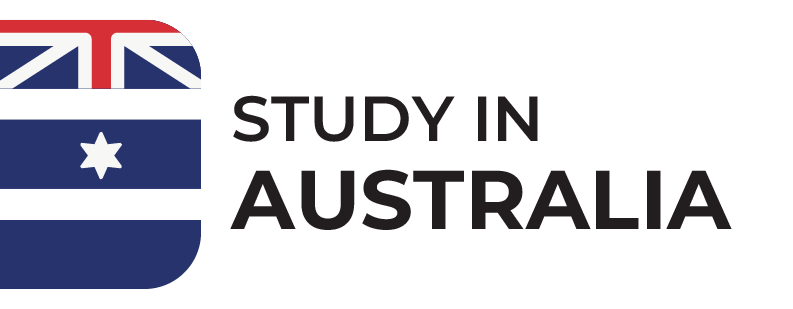Knowing the most employable degrees in Australia surely helps a lot when choosing a program, especially in one of the highest ranked universities in Australia. Famous for its natural wonders and beautiful beaches, Australia is also known world-wide for its academically excellent universities and the high rate of employability. Seven of Australia’s universities are on the top 100 in the Academic Ranking of World Universities, with the others following not far behind.
Although it is important to follow your passion when choosing a degree, sometimes you need to know exactly what the employability rate of that degree is – in order to help shape the future you want. Some of the most employable degrees in Australia range from 97.5% employed undergraduates and below. Meanwhile, the employment rate for the year 2019, according to the Graduate Outcomes Survey Results is 72.2%, for undergraduates in full-time employment and the overall employment rate of undergraduates is 86.8%.
Table of Contents
Which are the Most Employable Degrees in Australia?
More than 1.4 million national and international students decide to get their degree in Australia’s universities each year. The academic fields vary from health and sciences, all the way to engineering and the arts. Some study full-time, others part-time, and the opportunity for online study is also possible in Australian universities. Some of the most employable degrees in Australia belong to vocationally oriented study areas. Moreover, those with more generalist degrees might take longer to enter the labour market immediately after graduating. See a list of the most employable degrees in Australia below, sourced from the Graduate Outcomes Survey (GOS):
1. Pharmacy
Pharmacy is one of the study areas with the highest employability rate for the year 2019. With a percentage of 95.7% of full-time undergraduate employment in 2019, slightly lower than it was in 2018, a percentage of 97.2%. The total (full-time, part-time, and casual employment) undergraduate employment rate of those who have pursued this degree is 97.5%. The labour force participation rate is 98.5%.
| Study Area (Degree) | Full-time undergraduate employment | Total undergraduate employment rate |
| Pharmacy | 95.7% | 97.5% |
Studying pharmacy requires special focus on chemistry, human biology and physiology, pharmaceutics and pharmacology. Pharmacy degrees typically combine both, academic training as well as hands-on practice.
The entry to a Pharmacy course is usually very competitive, and you will be required to have high scores in some of their main subjects of study such as chemistry, biology, as well as physics and mathematics. However, the criteria varies from one university to the other.
2. Rehabilitation
Rehabilitation ranks second for full-time undergraduate employment rate, with a percentage of 92.4%. The total employment rate is 96.2%, differing from the year 2018 when it was 95.8%. The labour force participation rate is 98.7%.
| Study Area (Degree) | Full-time undergraduate employment | Total undergraduate employment rate |
| Rehabilitation | 92.4% | 96.2% |
Professionals in Rehabilitation therapy are occupational therapists, physical therapists, and physical therapy assistants. Rehabilitation will prepare you for roles that are quite similar to health professions such as medicine. However, the qualification you obtain determines the type of role you go into.
3. Medicine
Medicine is next with the highest employment rates. Medicine stands at 91.1% for full-time undergraduate employment rate, showing a decrease from the previous year, when it was 94.9%. The total employment rate for Medicine in the year 2019 stands at 91.9%. The labour force participation rate is 88.3%.
| Study Area (Degree) | Full-time undergraduate employment | Total undergraduate employment rate |
| Medicine | 91.1% | 91.9% |
Studying Medicine in Australia is highly regarded by international students everywhere. Australia offers Medicine as a postgraduate or undergraduate course. Getting into medical school can be difficult since you should start preparing when you’re already in high-school. That’s because the subjects you take in high-school will play an important role in order to gain admission. Some universities might look at your grades before considering anything else, however, that’s not the case with all of them.
Nevertheless, it’s important to note that most universities will require biology, chemistry, mathematics, a physics course, as well as at least one English course.
4. Dentistry
Dentistry, on the other hand, falls just behind Medicine, with a percentage of 86.2% of full-time employment rate, and 93.7% of total undergraduate employment rate. The labour force participation rate for dentistry is 94.7%.
| Study Area (Degree) | Full-time undergraduate employment | Total undergraduate employment rate |
| Dentistry | 86.2% | 93.7% |
The entry requirements for dental courses in Australia are prone to change depending on the school you’re applying to. However, you should keep in mind that dental schools are highly competitive as well – meaning you should lead in the criteria they set in order to be considered. The admission criteria will rely on your scores when it comes to important subjects for this field of study such as chemistry and biology.
5. Engineering
This study area stands at 84.8% of full-time employment. The total employment rate of this field is 88.4% differing slightly from last year when it was 88.2%. The labour force participation rate is 95.3%.
| Study Area (Degree) | Full-time undergraduate employment | Total undergraduate employment rate |
| Engineering | 84.8% | 88.4% |
Many of Australia’s best universities offer this field of study. Engineering is highly sought after, and the employment rate for undergraduates is also one of the highest among other degrees. However, admission in this study course is not simple; but the benefits are various.
There are different engineering courses offered in Australian universities, such as civil, mechanical, electrical, electronics, chemical, computer, telecommunications, geological, industrial, and more. This will allow the student to specialise in the field of their choice without restrictions.
6. Veterinary Science
Veterinary Science has a full-time employment rate of 81.9%. It has experienced a 3.3% decrease from the previous year when it was 84.7%. The total employment rate of this study field is 91.6%. The labour force participation rate stands at 84.9%.
| Study Area (Degree) | Full-time undergraduate employment | Total undergraduate employment rate |
| Veterinary Science | 81.9% | 91.6% |
Seeking a Veterinary Medicine degree means you will be taught on how to diagnose, treat, and prevent diseases in animals. Veterinarians have the right information on how to take care of pets, and they deliver this information to pet owners. Getting this degree means you will also have knowledge on the likes of Biochemistry, Immunology, Anatomy, and more.
As a Veterinary Science graduate you can work as a veterinary surgeon, nurse, zookeeper, wildlife consultant, or researcher. The options are large but just as the previously mentioned degrees, this one requires a lot of hard work and commitment as well.

